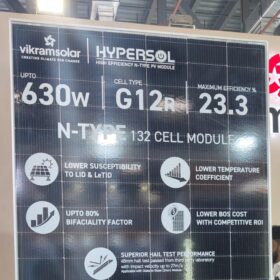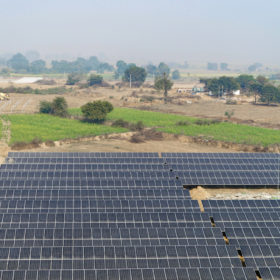Although the hydrogen economy, energy storage options such as lithium and zinc-bromine and solar power were among the subjects considered by a panel as the Technology Information, Forecasting and Assessment Council (TIFAC) celebrated its 33rd anniversary, ‘cleaning coal’ dominated the debate.
The discussions were inspired by TIFAC’s Technology Vision 2035, which has identified making the Indian economy non-fossil-fuel-based as a grand challenge. However, the panellists agreed it would be impossible for India to replace fossil fuels and coal should instead be made more efficient and ‘clean’.
The prospects of harnessing nuclear fusion in future were also considered, in a further blow to environmentalists.
Worryingly for India’s environmental ambitions, the arguments for the continued use of coal were expressed by a member of the NITI Aayog thinktank which advises the national government.
‘Clean coal’
TIFAC governing council chairman V.K. Saraswat said technology was required to clean coal, if it is to be the main energy source for India.
His argument was echoed by a member of the federal government, with Department of Science and Technology secretary Ashutosh Sharma saying India needs to figure out how to improve coal emissions, pollution control and power generation efficiency. Potential solutions might include advanced ultra-super-critical technology or gasification, he suggested.
A study produced by NITI Aayog and Japan’s Institute of Energy Economics has estimated coal will still supply 42%-50% of India’s energy mix in 2047. The nation currently draws 62.8% of its power from thermal plants which are mostly coal-fired but also burn lignite, gas and diesel. Renewables supply 23.1% of India’s power with hydro adding 12.4% and nuclear the balance.
Hydrogen problems
The emphasis on coal would appear to offer little prospect of India taking meaningful steps towards combating climate change and little was discussed of solar or wind power, although the use of bioenergy was mentioned.
On the use of hydrogen as an energy storage technology, NITI Aayog member Saraswat said: “We have to solve the problems of technology in hydrogen storage, transportation and production economically.”
“India also has huge geothermal resources,” he added, “particularly in the Himalayan region. The current use of this resource in India [is] very low but institutes and industry are working on this technology.”
Nuclear fusion
Secretary Sharma said hydrogen should be the choice of the future and an easier way to obtain it could be from methanol.
“The other options are fusion technologies, which will be the ultimate problem solvers,” he added. “There is already a big fusion reactor in our solar system – the sun. So, we can make use of solar energy in all different forms.”
The panellists agreed a lack of lithium meant India should avoid lithium-ion solutions for energy storage and instead focus on emerging alternative battery technologies, such as zinc-bromine.
Verifiable sustainability
This content is protected by copyright and may not be reused. If you want to cooperate with us and would like to reuse some of our content, please contact: editors@pv-magazine.com.










Power generation through fossil fuel should not be seen through the lens of power requirement but through the Climate Change aspect of which India is a signatory.
Under the intended nationally determined contributions, India has agreed to UN certain conditions including restricting rise in ambient temperature which will be feasible only when usage of fossil fuel is reduced.
The whole world is moving towards renewable forms of energy. India till now is no exception. Achievement and strides made in RE in the last decade is commendable. We need to maintain tempo and not do somersault or play topsy-turvy games after having come this far.
I am amazed at the “Energy Experts” of India. More of the same… more deaths… more suffering…. as one scratches the back of the other experts.
Now even the nuclear “experts” are proposing “hare brained” schemes…. when they cannot manage existing nuclear waste…. they want fusion to produce…. even more. The same old song and dance…. let me remind readers…. Nuclear Fusion leaves immense amount of waste… not in fuels but radioactive magnets, structures…. and even mops, gloves and swabs activated by “maintenance”.
THERE IS AND CAN ONLY BE ONE FUTURE…. SOLAR ENERGY INCLUDING HYDRO STORAGE WHEN NEEDED…
All these experts are ex…. from the past…. in nature and unable to think “out of the box”. We can only hope PM Modi will “see through” this institutional fraud.
THOSE WHO DO NOT LEARN FROM THEIR MISTAKES…. ARE DOOMED TO REPEAT THEM…